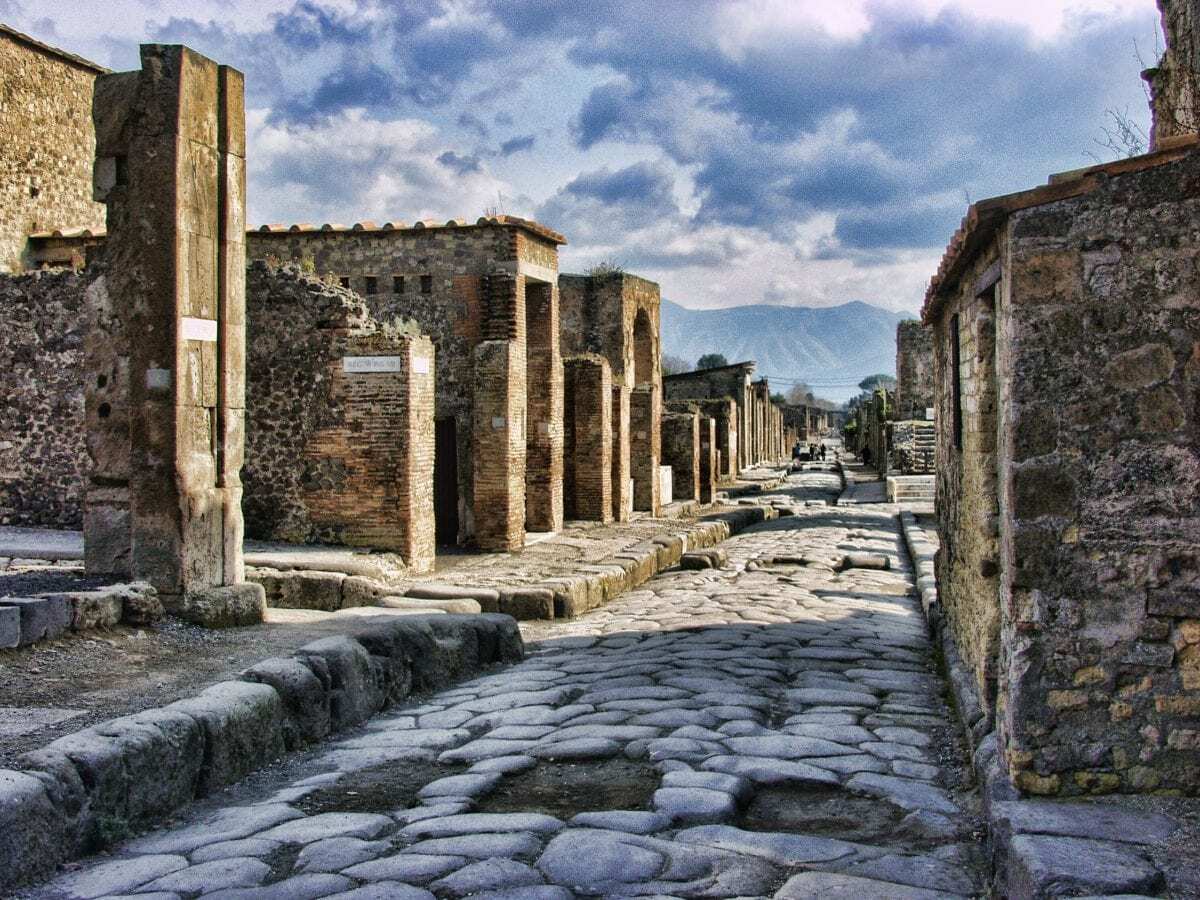A cache of mysterious objects has been discovered by archaeologists working on new excavations at Pompeii.
The deposit contains a mixed assemblage of semi-precious stones including amethyst, amber, and carnelian that has been ornately carved into shapes of human figures and scarab beetles.
Also discovered are the remains of a wooden box, indicated from the survival of bronze hinges that contained glass beads, bone figurines, mirrors as well as the discernible mythological character of Dionysus with a satyr, a skull and several phalluses.
Pompeii was an ancient town in Italy, buried in volcanic ash from an eruption of Mount Vesuvius in AD79 and is perhaps one of the most famous sites in Roman archaeology.
The site is an archaeological time capsule, known for containing almost perfectly preserved frescoes, mosaics, graffiti and remains of food that unlock the everyday features of life in a Roman town.
Although the site has been extensively excavated since its rediscovery in 1748 by engineers digging the foundations for the King of Naples’ summer palace, there is still much to be discovered and current excavations are focused on the northern area of Regio V of the city.
The new objects were found in the ‘House of the Garden’, where last year a charcoal inscription challenged previous views on the date of the eruption of Vesuvius.
Massimo Osanna, director of the Pompeii Archaeological Park tentatively announced the finds as a possible ‘sorcerer’s treasure trove’ due to the amulet properties of the stones, figures and the presence of mirrors which were believed to have magical properties.
However, he also said the absence of gold and silver suggests this could have been owned by a slave of the house, perhaps from a distant part of the empire with unusual cult practices. Perhaps the objects were used for fertility rituals or to seek good fortune in other areas of life.
The amulets and beads could have been strung together as a charm bracelet or necklace. On the other hand, they could have been used for negative purposes, as there are examples of curse tablets elsewhere that show the Romans were unafraid to wish their rivals ill. However, the types of objects suggest they were more likely to be used to ward off evil than to encourage it.
Pompeii has fascinated generations of archaeologists and enthusiasts alike and the new excavations are clearly yielding powerful new information about the Roman town and the life of its inhabitants. We eagerly await to hear more of what will be discovered as excavations continue.
Written by Laura Aitken-Burt @epicancientlau
Header Image – Public Domain







